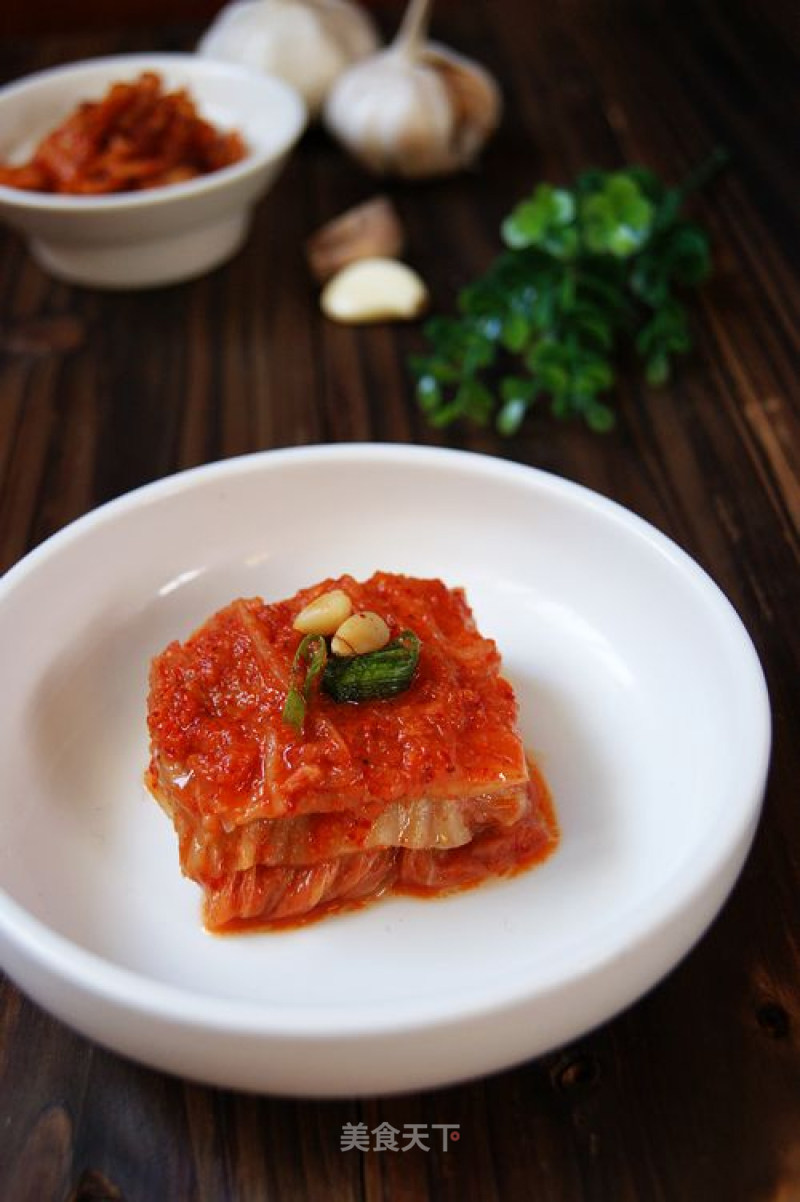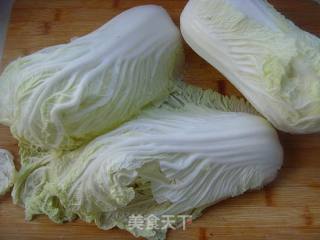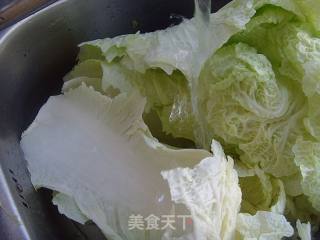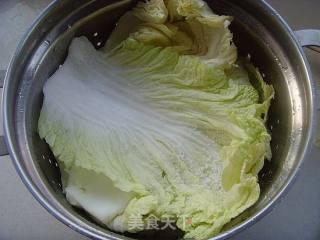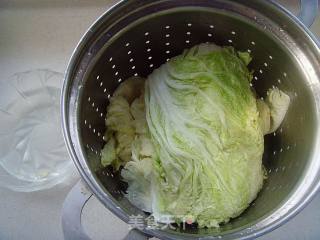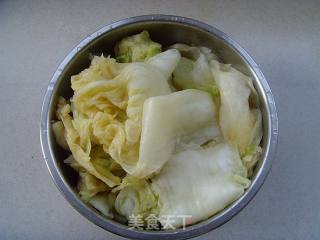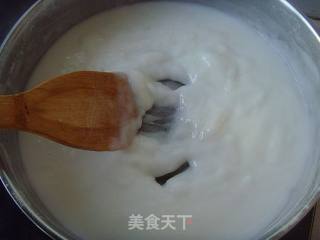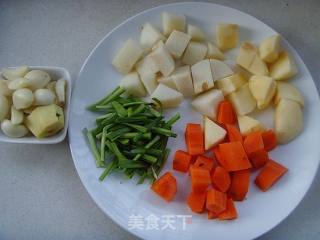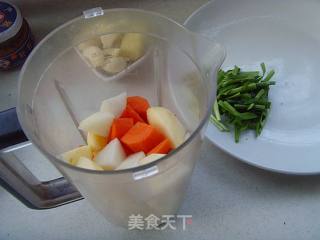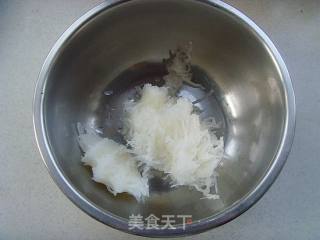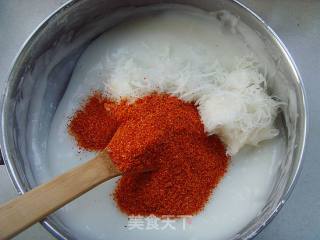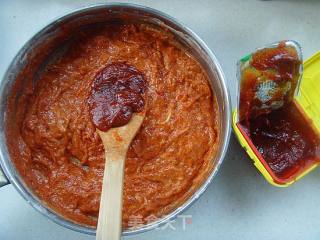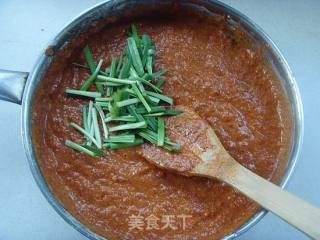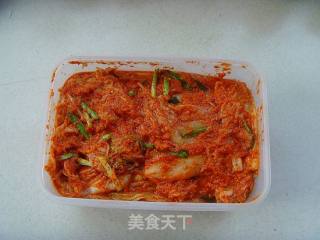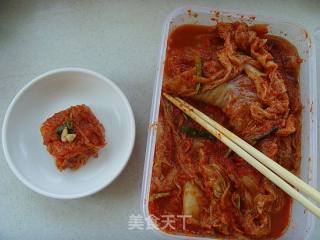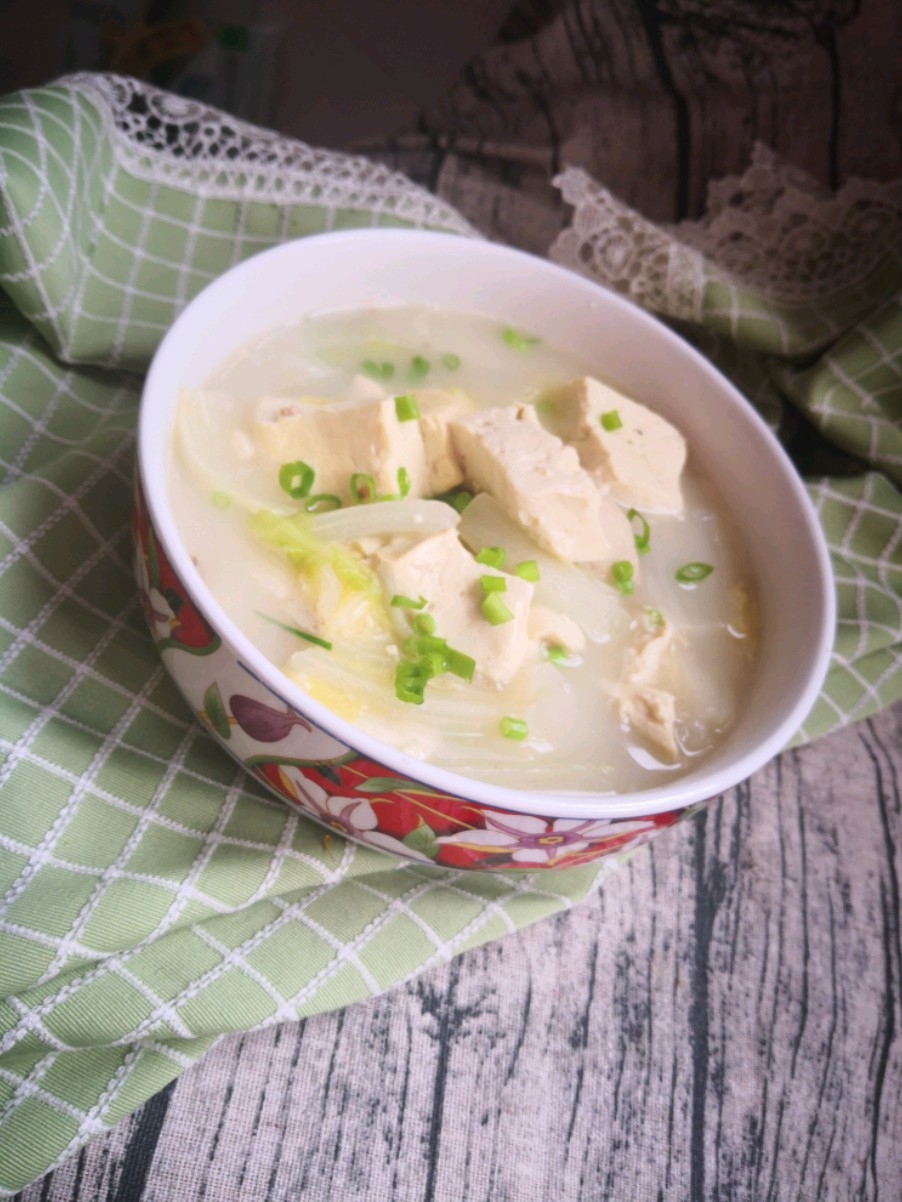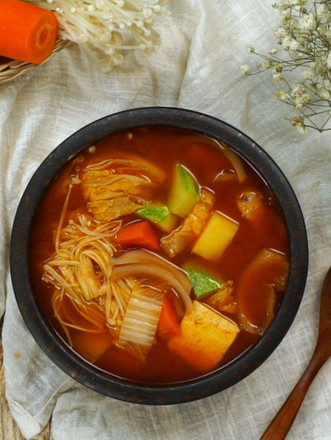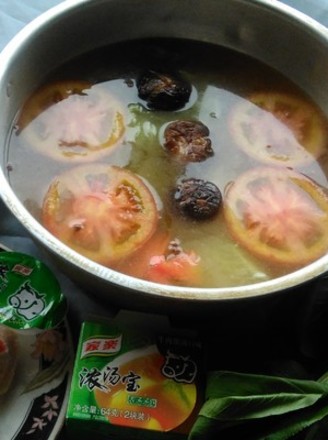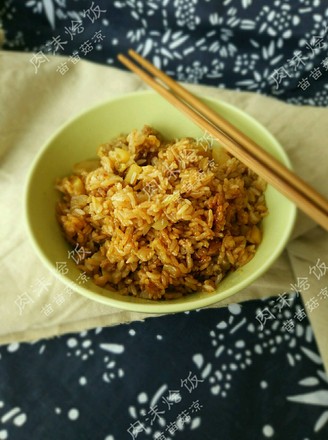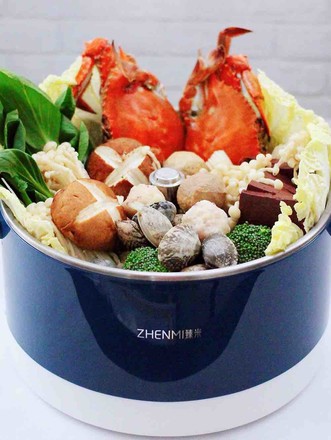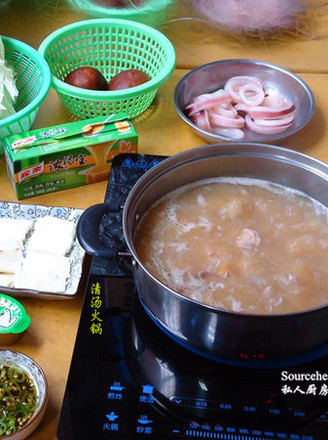Korean Spicy Cabbage
1.
Chinese cabbage, tear off the yellow leaves.
2.
Put the drained cabbage leaves into a strainer pot with eyes.
3.
Put the drained cabbage leaves into a strainer pot with eyes.
4.
Press a water bag in the strainer pan. During the pickling process, shake the pickled cabbage several times to force out the water of the cabbage itself.
5.
Marinate for 2-3 days. After marinating, squeeze out the water.
6.
After soaking and rinsing the pickled Chinese cabbage in cold boiled water, squeeze out the water for later use.
7.
50g of glutinous rice flour, add 500g of water (1:10), mix well, then heat on a low heat, and stir while boiling; when boiling, turn off the heat, and then continue to stir at the rest of the temperature, and it will become a paste-like viscous. State, let cool until completely cooled for later use.
8.
Cut carrots, onions, apples, and pears into small pieces; cut leek into sections for later use.
9.
Add the cut into small pieces of fruits and vegetables together with the peeled garlic and ginger, add them to the cooking and beat them into a puree.
10.
Rub the white radish into filaments and squeeze out the water.
11.
Add the cold glutinous rice paste to the shredded white radish, then add the red chili powder and mix well.
12.
Add the chili sauce and mix well again.
13.
Pour in the whipped fruit and vegetable puree, add shrimp paste, fish sauce, and mix well; add white sesame seeds, leek segments, and sugar, mix well, and serve as a marinade.
14.
Spread a layer of sauce evenly on the front and back of the cabbage, put another slice on it, and repeat until all the cabbage is coated.
15.
Put the cabbage coated with sauce in the box neatly, and finally put a thicker sauce on the surface, cover it, and ferment at room temperature for 2-3 days (1 day at room temperature in summer, 3-5 days in winter) Put it in the refrigerator for 30-40 days.
16.

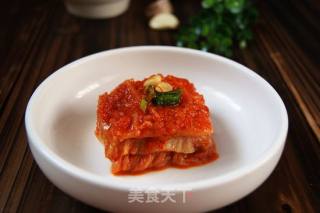
Tips:
Tips:
1. With the fermentation of kimchi, it produces antibacterial effect. The effect of harmful bacteria is suppressed by the lactic acid bacteria produced during the fermentation process, and the lactic acid bacteria that produce sour taste as the fermentation matures not only make kimchi more delicious, but also inhibit other bacteria in the intestines to prevent abnormal fermentation , Inhibit germs.
2. (In addition, kimchi can also prevent acidosis caused by the acidification of blood when excessive intake of meat or acidic foods. The main ingredients used in kimchi contain a lot of water. Therefore, the nutrient composition appears to be relatively small. However, lactic acid bacteria have the function of inhibiting the reproduction of harmful bacteria in the intestines and purifying the intestines and stomach.
3. Kimchi also contributes to the prevention of adult diseases, as well as the prevention of obesity, high blood pressure, diabetes, and digestive system cancer.
4. In addition, kimchi has the effect of purifying the stomach and intestines due to the complex cooperation of vegetable juice and salt. Kimchi promotes the secretion of pepsin, a proteolytic enzyme in the gastrointestinal tract, and normalizes the distribution of microorganisms in the intestine.
5. Fish sauce is the most indispensable thing, which is why the hot and sour kimchi in China is the most different from Korean kimchi. In Korea, almost every family makes fish sauce by themselves. Chinese people don’t eat this thing, but in big supermarkets. Some sell them, mostly Thai fish sauce. This is a pity, but it’s better to use Korean fish sauce to taste.

